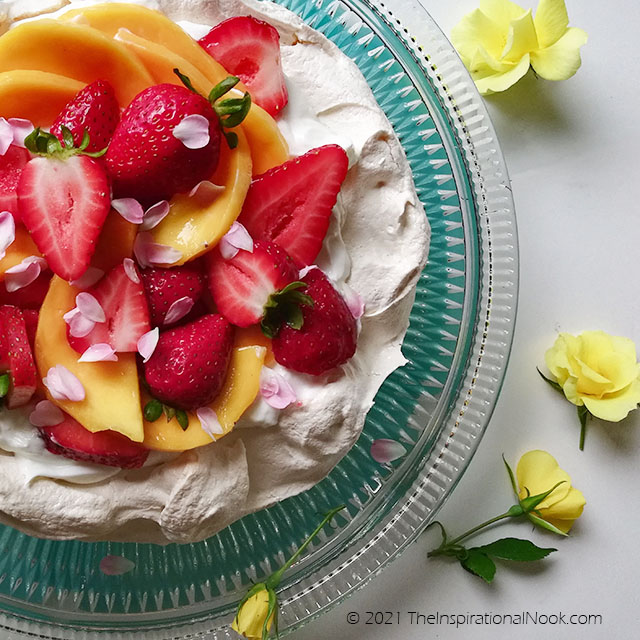Low Calorie Mango and Strawberry Pavlova for Christmas
"... Pavlova dazzled them all.
The air was pale pink and all cares melted away."
- Maira Kalman
Whether illustrator and author, Maira Kalman was talking about the beautiful and light meringue dessert or the graceful and lithesome ballerina, Anna Pavlova, after whom this ethereal dessert was named, Kalman was right on both accounts. Pavlova is indeed an impressive sight to behold and an unforgettable experience for those lucky enough to make the acquaintance.
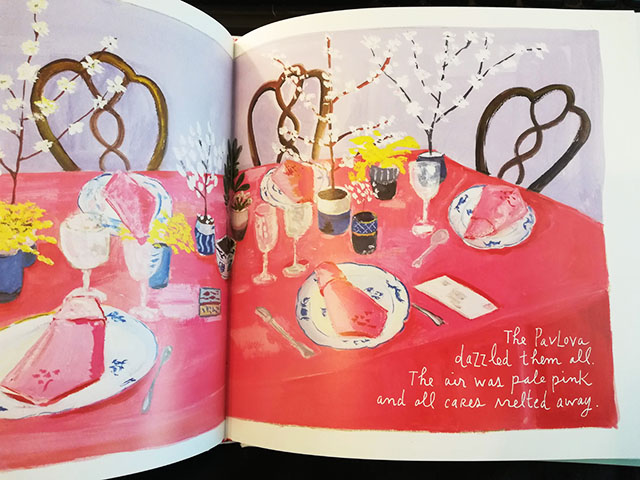 |
| Illustration by Maira Kalman from the recipe book "Cake" by Kalman and Barbara Scott-Goodman. |
A Low-Calorie, Fat-Free Pavlova
Origins of Pavlova
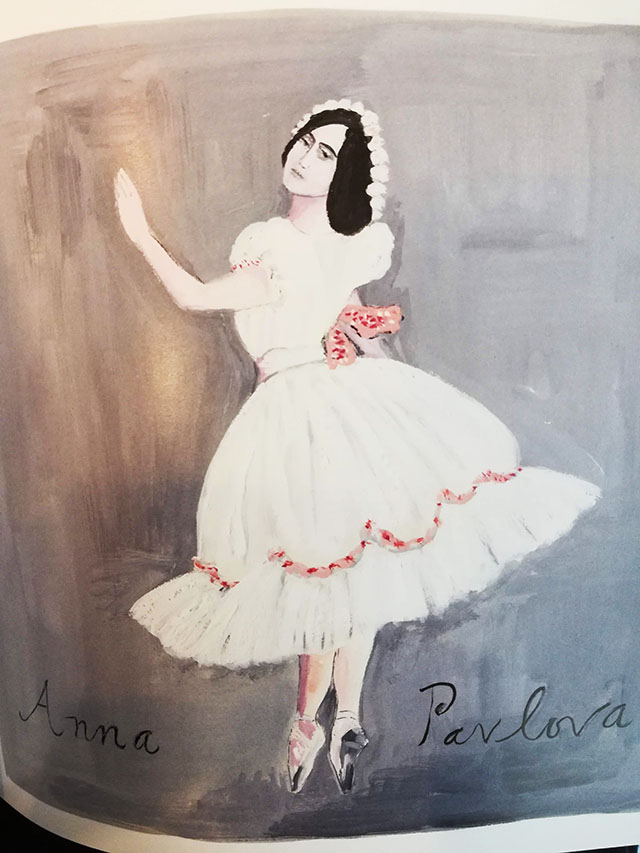 |
| Anna Pavlova, the beautiful ballerina and namesake of the dessert. Beautifully illustrated by Maira Kalman from the recipe book "Cake" by Kalman and Barbara Scott-Goodman. |
The 3 Components of a Pavlova
Pavlova Topping Ideas : The Best Fruit for Pavlovas
1. Eggs
- Separate eggs carefully. Ensure that there is absolutely no egg yolk in the egg whites or else the egg whites won't become voluminous and fluffy when beaten.
- Use clean, grease-free equipment. To whip egg whites, use a clean, dry bowl that is completely grease free. That goes for the electric beaters as well. Any grease will prevent the egg whites from becoming frothy and foamy.
- Use room temperature egg whites to help the foam form quickly.
- Whip egg whites only until soft peaks forms. What is a soft peak? A soft peak will form in a matter of a couple of minutes of beating egg whites with a hand blender. Test for soft peaks but turning off the blender and holding the blender up. When you hold the beater up, the egg foam forms a peak but the tip of the peak curls ever so slightly back. It's not yet stiff enough to stand smartly upright. This is a soft egg white peak.
- Do not over beat egg whites. How do you know if you have overbeaten egg whites? The foam will form clumps and look lumpy.
- How do you fix over beaten egg whites? Add another egg white to the mix and whip for a few more seconds to moisten and thin out the overbeaten clumps. Take care to whip just until soft peaks form.
2. Sugar
- Use caster/superfine sugar or bakers sugar so that the sugar can dissolve in the egg foam easily. Granulated sugar is a complete no-no since it will not dissolve completely in the egg whites and the mixture will remain grainy or gritty.
- To make your own caster sugar, grind down granulated sugar with a few pulses in a food processor to break down the sugar into finer crystals.
- Add the sugar slowly, a little at a time, beating well. The mixture will start to become shiny.
- Beat until peaks are stiff and glossy. At this stage you can turn the bowl over your head and nothing will fall out on you. Try it :)
 |
| Beat superfine sugar into egg whites until the meringue mixture becomes shiny, firm and hard peaks form. |
3. Cream of Tartar and Vinegar
4. Cornstarch
- The cornstarch should be sprinkled into the meringue mixture at the end.
- Use a spatula to fold the cornstarch into the mixture until it is just incorporated.
- Take care not to overmix and deflate the meringue.
4. Why does my pavlova go brown?
5. How do you know when the pavlova is cooked?
Low Calorie Pavlova Recipe
Ingredients:
Step-by-Step Instructions
- Preheat oven to 275°F (for a 10 inch meringue) or 250°F (if baking two 7.5 inch meringues).
- Line a baking tray with parchment paper. Using an appropriately sized round plate as a guide, mark the outline of the plate with a pencil.
 |
| Use a plate to draw a circle on parchment paper. You will use this as the outline for the pavlova. |
- Gradually add the sugar, 2 tablespoons at a time, while beating constantly until the mixture looks glossy and stiff peaks form.
- Sprinkle in the cornstarch, vanilla and vinegar and fold in with a rubber spatula until just blended.
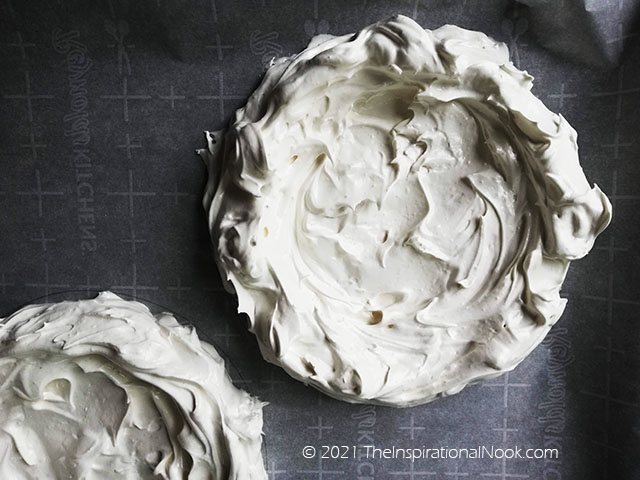 |
| Spoon meringue mixture into the circles to form nests. |
- For one 10 inch meringue, bake for 1 hour 15 minutes at 275°F. If baking two 7.5 inch meringues, bake for 1 hour 20 minutes at 250°F.
- Turn the heat off and leave the meringue in the oven for 1 hour to dry out thoroughly. Remove and cool completely on a wire rack.
- Before serving, place meringue shell on a serving plate.
- Just before serving, whip/ stir the Greek yogurt with a fork to form a smooth, creamy mixture. Spoon into the center of the meringue.
- Then top the greek yoghurt with freshly sliced mangoes, strawberries and rose petal. Serve immediately.
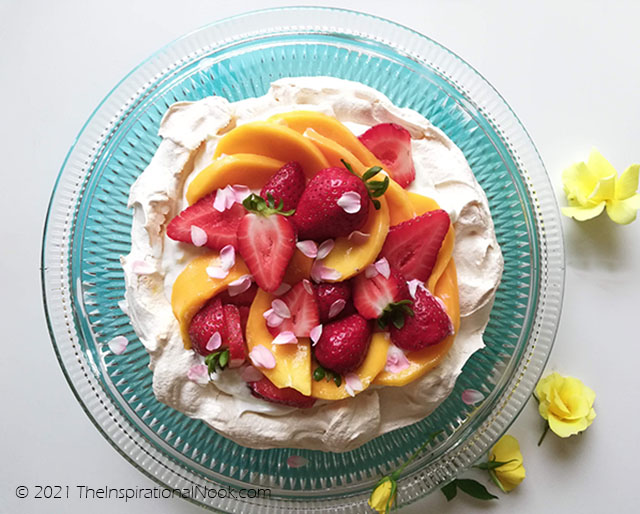 |
| Top meringue with beaten yogurt and fresh fruit and flowers. |
What to do with a failed, flat or broken pavlova?
Don't worry. That happens to the best of us; a botched pavlova. The intention was right, but with possible distractions, your pavlova turns out to be a flop. If you have a failed, flat or broken pavlova, just make a "Memsahib's Mess." It's a version of the classic Eton Mess. Check out my recipe here.

Make a 'Memsahib's Mess' with a botched pavlova. Click here for the recipe.
Click on the "Sweets and Desserts" label below to see my other sweet treats
or
Explore "My Cookbook Index" for a full menu of all my other cooking creations.

